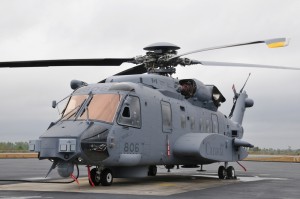In 2008, the Canada First Defence Strategy (CFDS) itemized an extensive shopping list of military equipment. Essentially a 20 year spending plan, CFDS estimated that roughly $60 billion worth of acquisitions would be needed for the Canadian Forces.
After more than a decade of spending very little on capital replacement in an effort to contribute to federal deficit reduction, DND was flush with procurement cash following Budgets 2005 and 2006. This infusion of Vote 5 Capital funding doubled the funding available to buy capital equipment and allowed the number of active major projects to expand by a factor of five.
While significant progress has been made in delivering a number of platforms to the military, a sizable portion of the expanded capital program has stalled. Consequently, DND is in the bizarre situation of having moved in the span of less than a decade from being billions of dollars short on capital funding, to being unable to spend over a billion dollars a year in available capital authorities.
Between 2007/2008 and 2011/2012 a cumulative $3.9 billion in available Vote 5 money (22 percent of the funds available) went unexpended by the department, including more than $2.5 billion in the last two years alone.
The root cause of this under-spending is a capital equipment program that is simply too ambitious for the Canadian defence procurement system that must process it. The CFDS made a point of articulating a “level of ambition” for the Canadian Forces; it is now clear that the initial schedule established for the capital component of this plan was simply too ambitious. Recognizing this, while the government is so far resisting the urge to once again target the capital budget as a means of fighting the deficit, Budget 2012 did announce a major re-profiling of the capital program to adjust to a more realistic schedule. As a result, $3.5 billion in capital equipment funding will be shifted into the future over seven years.
These delays to date and those anticipated are significant. In addition to pushing the acquisition of much needed equipment further down the road, the capital shifts are severely eroding the department’s purchasing power due to the impact of defence specific inflation (DSI). Whereas current Bank of Canada policy aims at keeping Canadian inflation at two percent, defence inflation is significantly higher – in 2011, the Vice Chief of Defence Staff stated that Canadian DSI was seven percent annually.
If DND’s procurement budget was compensated to account for these inflationary pressures, the delays in the capital program would be relatively inconsequential. Unfortunately, this is not the case. The department effectively receives annual compensation to offset the impact of inflation through an “escalator” that provides an automatic annual increase, but this only amounts to two percent annually – matching the Bank of Canada inflation target.
At present, therefore, defence specific inflation erodes procurement budgets by at least five percent a year – the gap between defence inflation and the department’s annual escalator. Combined, the capital lapses to date, and those announced in Budget 2012, just four years into a 20 year capital program, amount to $7.4 billion in shifted capital funding. A five percent loss of purchasing power means that $370 million has already been removed from DND’s procurement balance sheet. If the capital program continues to face delays at a similar rate, close to $2 billion worth of purchasing power could be lost due to defence inflation over the CFDS’ 20 year planning period. This could render entire projects unaffordable, as this amount is roughly equivalent to the budgets for the army’s CCV and TAPV projects.
Worse still, it is not clear that seven percent accurately captures the inflationary pressures facing the department, particularly for the naval shipbuilding program that represents roughly half of the total capital program budget. The RAND Corporation, for instance, suggests that the effective inflation rate for ships ranges between 7.5 and 10 percent. This would mean that the actual loss of purchasing power in the naval shipbuilding program due to inflation is somewhere in the neighborhood of $1 million a day.
Two solutions could mitigate this problem. First, budgets could be properly inflated. However, at least until deficit reduction measures are concluded, this is highly unlikely. Second, effective procurement reform that eliminates endemic delay would prevent the loss of purchasing power from arising in the first place. However, despite various department efforts, there is little indication that this will occur, as the time to contract for defence procurements is on the rise.
With neither of these solutions likely, the best course of action is a reappraisal of the capital investment plan that takes a realistic assessment of DND’s actual purchasing power into account. If this does not occur as part of the defence policy reset currently underway, DND will continue prosecuting an overly ambitious capital plan, imperiling its equipment acquisition in the process.
David Perry is a PhD Candidate in Political Science at Carleton University, a Defence Analyst with the CDAI, and a member of the Advisory Council for the CDFAI Strategic Studies Working Group.

